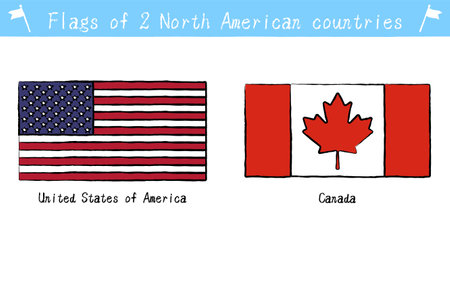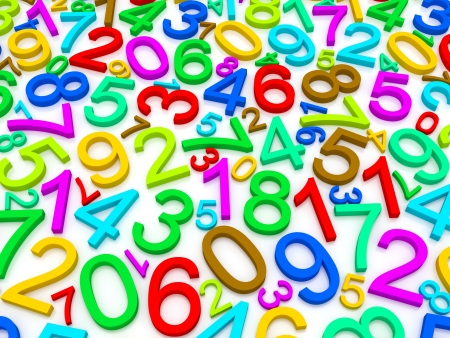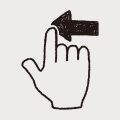Introduction to Palm Reading in American Culture
Palm reading, also known as palmistry, has woven its way into American culture as a fascinating blend of entertainment, curiosity, and mystery. While palmistry has ancient roots from different parts of the world, it gained popularity in the United States during the late 19th and early 20th centuries, when fortune-telling parlors and traveling fairs became common. Today, palm reading is often seen at carnivals, in movies, or even at parties—sometimes sparking intrigue, sometimes skepticism.
How Americans View Palm Reading
In the U.S., palm reading tends to be perceived in a variety of ways. Some people see it as a fun party trick or an interesting conversation starter. Others approach it with more seriousness, believing that the lines on their hands can reveal secrets about their future or personality. There’s also a large group that views palmistry with skepticism or dismisses it as superstition. Regardless of belief, the topic consistently finds its way into pop culture and social gatherings.
Why Palm Reading Is a Hot Topic
Several factors contribute to palm readings ongoing popularity and presence in American conversations:
| Reason | Description |
|---|---|
| Entertainment Value | Palm readings are often light-hearted and engaging activities at events. |
| Cultural Curiosity | Americans enjoy exploring traditions from around the world, and palmistry’s exotic origins add to its appeal. |
| Search for Meaning | Some seek answers about love, career, or personality through unconventional means like palmistry. |
| Media Influence | Palm readers frequently appear in TV shows, movies, and books set in America. |
| Mystique and Intrigue | The idea that your hands might tell your story fascinates many people. |
The Roots of Common Myths
Because palm reading isn’t a mainstream science in the U.S., myths and misunderstandings have flourished over time. These myths are influenced by Hollywood portrayals, cultural legends, word-of-mouth stories, and even misinterpretations of what palm readers actually do. As a result, Americans may hold beliefs about palmistry that differ significantly from its traditional practices.
2. Myth: Palm Reading Can Predict Your Exact Future
One of the most common American myths about palm reading is the belief that a palm reader can tell you exactly what will happen in your future—down to specific events, dates, or even lottery numbers. This idea is everywhere in American culture, but it’s not how real palmistry works.
How Hollywood and Pop Culture Shaped This Myth
Movies, TV shows, and cartoons often show fortune tellers with crystal balls and mysterious tents, promising their clients dramatic revelations about their future. In these stories, a palm reader might say things like “You’ll meet the love of your life next Tuesday” or “You’re going to become rich overnight.” These scenes make palm reading seem almost magical or supernatural.
Pop Culture vs. Reality: A Comparison
| Pop Culture Depiction | Actual Palm Reading Practice |
|---|---|
| Palm readers give exact dates and details about the future. | Palm readers interpret personality traits, strengths, and challenges; predictions are general trends, not specifics. |
| Palm reading is shown as a mystical power or magic trick. | Palmistry is based on observation and interpretation of lines and shapes on the hand. |
| Palm readers guarantee love, money, or success if you follow their advice. | No ethical palm reader promises guaranteed results; it’s more about self-reflection than destiny. |
The Real Purpose of Palm Reading
In reality, palm reading is more like a tool for self-discovery. It can help you understand your tendencies, strengths, and areas where you might face challenges. Instead of giving you an exact play-by-play of your future, a good palm reader helps you reflect on your life and make informed decisions. The belief that palm reading predicts your exact future is mainly a Hollywood invention that makes for great entertainment—but doesn’t match up with traditional or modern palmistry practices.

3. Myth: Palm Reading Is a Form of Witchcraft
Many Americans believe that palm reading, also known as palmistry, is closely linked to witchcraft or the occult. This idea has deep roots in U.S. history and culture, but where did it come from? Let’s explore how this myth developed and why it continues to influence people today.
How the Association Began
The connection between palm reading and witchcraft in America can be traced back to several historical moments and religious movements. In the 17th and 18th centuries, during times like the Salem witch trials, any practice outside mainstream Christianity was often labeled as “witchcraft.” Palmistry, tarot cards, astrology, and other forms of divination were seen as suspicious or even dangerous. Religious leaders warned their communities about these practices, claiming they opened the door to evil spirits or went against God’s teachings.
Key Historical Events Influencing the Myth
| Event | Impact on Palm Readings Reputation |
|---|---|
| Salem Witch Trials (1692) | Heightened fear of anything considered mystical; palm readers could be accused of witchcraft. |
| Great Awakening (1730s-1740s) | Religious revival led to stricter views on spiritual practices; non-Christian beliefs were condemned. |
| 19th Century Spiritualism Movement | Palmistry became popular with spiritualists but was still distrusted by mainstream society. |
The Role of Popular Culture
Books, movies, and TV shows in America have often portrayed palm readers as mysterious figures or even witches. Halloween costumes featuring fortune tellers with crystal balls add to this stereotype. While these images are fun for entertainment, they reinforce the idea that palmistry belongs to the world of magic rather than being a form of self-reflection or personality analysis.
Summary: Why This Myth Persists
The belief that palm reading is a type of witchcraft comes from a mix of religious warnings, historical events, and pop culture portrayals. Even though most modern palm readers do not view themselves as witches or occult practitioners, the myth remains strong in American culture due to its deep historical roots.
4. Myth: Only Certain People Can Read Palms Accurately
The belief that only a chosen few have the special ability to read palms accurately is a common myth in American culture. This idea paints palm reading as something mysterious and magical, reserved for people with rare talents or supernatural powers. But where did this myth come from, and why do so many Americans still believe it?
Media Influence on the Myth
Movies, TV shows, and even cartoons often show palm readers as exotic, mystical characters—think of the fortune teller in a crystal ball-filled tent at the fair. These media portrayals make palm reading seem like a hidden art that only gifted individuals can practice. Over time, this has shaped how Americans view palmistry.
Historical Practitioners and Their Role
Historically, palm reading was sometimes practiced by people who also claimed other magical abilities. In old Europe and early America, these practitioners were often seen as having secret knowledge. They kept their techniques private to protect their business and reputation, which made palmistry look even more exclusive.
Comparing Media vs. Reality
| Media Portrayal | Reality |
|---|---|
| Mysterious, magical skill only some people have | A learnable skill based on study and observation |
| Palm readers shown as psychics or fortune tellers | Palmistry is practiced by everyday people worldwide |
| Secret rituals and dramatic settings | No magic needed; anyone can learn basics with practice |
Why This Myth Persists Today
This myth remains popular because it adds excitement and drama to palm readings. Believing that only special people can do it makes palmistry feel more impressive and intriguing. However, in reality, with the right resources and practice, anyone can learn the fundamentals of palm reading.
5. The Reality Behind the Myths
When it comes to palm reading in America, there are plenty of myths floating around. Some people think palm reading is pure magic, while others believe it’s all fake. But what does palm reading really involve? Let’s clear up the confusion by looking at the facts and exploring how palm reading fits into American culture.
What Palm Reading Really Is
Palm reading, or chiromancy, is an ancient practice that looks at the lines, shapes, and mounts on your hand to give insights about personality, tendencies, and sometimes life events. While some cultures see it as mystical or spiritual, in America today, palm reading is usually approached with a lighthearted attitude. Most people see it as a form of entertainment or a fun way to reflect on themselves.
Main Purposes of Palm Reading in America
| Purpose | Description |
|---|---|
| Entertainment | Palm readings are popular at parties, fairs, and festivals as a way to have fun and spark conversations. |
| Self-Reflection | Some use palm readings to learn more about their own personalities or habits—like a creative way of self-discovery. |
| Cultural Diversity | America is a melting pot. Many traditions, including palm reading, are borrowed from different cultures and shared among communities. |
Busting Common Myths with Facts
- Myth: Palm readers can predict exact future events.
Fact: Most American palm readers focus on general traits and possibilities rather than specific predictions. - Myth: Only “gifted” people can read palms.
Fact: Anyone can learn the basics of palmistry; it’s more about practice than supernatural abilities. - Myth: Palm reading is against science.
Fact: While not scientific, palm reading can be a harmless tool for self-reflection and social interaction.
Palm Reading’s Role in Modern American Life
In modern America, palm reading fits comfortably alongside horoscopes and fortune cookies—fun ways to reflect on life or start a conversation. Whether at a street fair or a family gathering, having your palm read is usually seen as an enjoyable experience that celebrates cultural diversity. So next time you see a palm reader at an event, remember: it’s more about enjoying the moment and learning something new about yourself than unlocking any ancient secrets!


